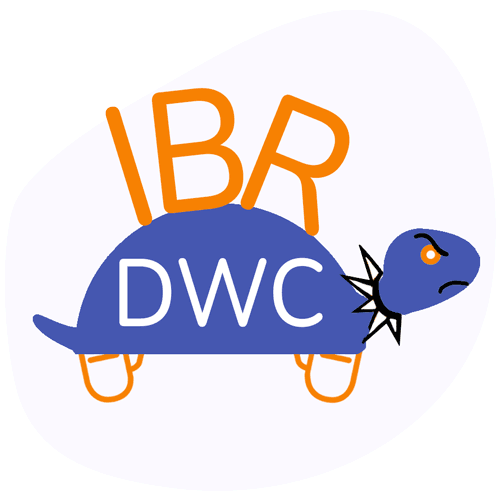Arkansas Outpaces CA in Workers' Comp Compliance Innovation

California is the most populous state in the Union, a global hub of technological innovation, and the fifth-largest economy on the planet.
Yet when it comes to modernizing its approach to workers’ comp compliance, California can only aspire to the level of sophistication displayed by Arkansas.
According to StateScoop, the Arkansas Department of Labor and Licensing (ADLL), under which the state’s Workers’ Compensation Commission (WCC) operates, announced a partnership with Tyler Technologies that would, among other regulatory goals, assist with workers’ compensation and labor code enforcement.
In tandem with improving field inspections, Tyler’s data management and AI tools aim to make compliance enforcement more efficient and effective at deterring abuse.
Unfortunately, in California daisyBill seems to be the only entity interested in systematically monitoring compliance or addressing a lack thereof, with zero support from the state’s Division of Workers’ Compensation (DWC).
Arkansas’s proactive decision to engage in a public/private partnership should (emphasis on should) interest California legislators—because it should be abundantly clear that the California DWC simply ignores legislative attempts to identify and halt payer abuse.
Dataphobia Renders CA DWC Useless
Why does the California DWC ignore state laws requiring it to gather and analyze data to improve workers' compensation?
As we’ve reported, the DWC is stubbornly retrograde in its failed approach to fulfilling its regulatory responsibilities, as evidenced by the following:
-
The DWC declared legally required claims data reporting by claims administrators to be “voluntary.”
As such, the DWC’s Workers’ Compensation Information System (WCIS) comprises only the data insurers and Third-Party Administrators (TPAs) choose to share with the state—making system-wide analyses of California workers’ compensation entirely dependent on the discretion of claims administrators.
-
The DWC refuses to establish a Utilization Review (UR) reporting system by which claims administrators must report approvals and denials of treatment requested by injured workers’ treating physicians.
Establishing the UR data reporting system was also mandated by state law in 2016, yet the DWC has failed to comply.
Instead of gathering and analyzing complete, independently verified data to identify ways to improve the system, the DWC relies on entities like the Workers’ Compensation Insurance Rating Bureau (WCIRB), an insurer advocacy group, and the Workers’ Compensations Research Institute (WCRI), the leadership of which is dominated by payer interests.
Is it a coincidence that, with this dearth of data, California spends at least twice as much as the national median to deliver every dollar of benefits to injured workers, and takes twice as long to close workers’ comp claims? Bear in mind that even those troubling statistics come from the WCIRB, meaning that, in all likelihood, the situation is even uglier.
Rather than leveraging technology from private companies to forge a better system, as in Arkansas, the California DWC has abdicated its regulatory duties to private companies that stand to benefit from dysfunction.
Insurers and Third-Party Administrators (TPAs) dictate care through the Medical Provider Network (MPN) system, which has failed profoundly to facilitate injured workers’ access to care—but has succeeded monumentally in depressing providers’ reimbursement rates. The MPN system, despite doing nothing but harm, is effectively unmonitored by the DWC, which keeps its head planted firmly in the sand.
ADLL: Using Tech to Optimize Enforcement
According to Tyler Technology’s website, its software can help state regulatory agencies to (emphasis ours):
“Oversee, investigate, and monitor compliance….The application standardizes and automates the tasks associated with regulatory enforcement to ensure an efficient, fair, and systematic approach to ensuring compliance.”
While we cannot speak to the quality or efficacy of Tyler Technologies software specifically or of the ADLL’s ability to employ that technology effectively, we do know one thing: by at least trying to establish optimal workflows, crunching numbers, and identifying trends, technology can empower any state agency to perform its function more competently.
In other words, Arkansas is, at the very least, making an effort to protect injured workers from abuse.
Contrast this with the behavior of the California DWC, which somnambulates through its duties despite reliable, verifiable data from daisyBill indicating staggering levels of non-compliance.
When daisyBill reports this non-compliance to the DWC, complete with exhaustive data to verify the accusations, the DWC consistently, doggedly does nothing.
California does not lack the tools, resources, or public finances to apply technological innovation to its crumbling workers’ comp system. It lacks only true leadership from its DWC. While the ADLL proactively seeks data and enlists the help of well-equipped private companies to better manage workers’ comp, the DWC does nothing with the data we gift-wrap and drop on its doorstep.
One of these state agencies cares enough about injured workers to take action. The other seems content to know as little as possible as providers and injured workers suffer—forcing private actors like daisyBill to do their best to police a system over which we have no authority.
Nationwide, daisyBill increases revenue and decreases hassle for providers who treat injured workers. Get a free demonstration below.
SCHEDULE DEMO
DaisyBill provides content as an insightful service to its readers and clients. It does not offer legal advice and cannot guarantee the accuracy or suitability of its content for a particular purpose.

.gif)


